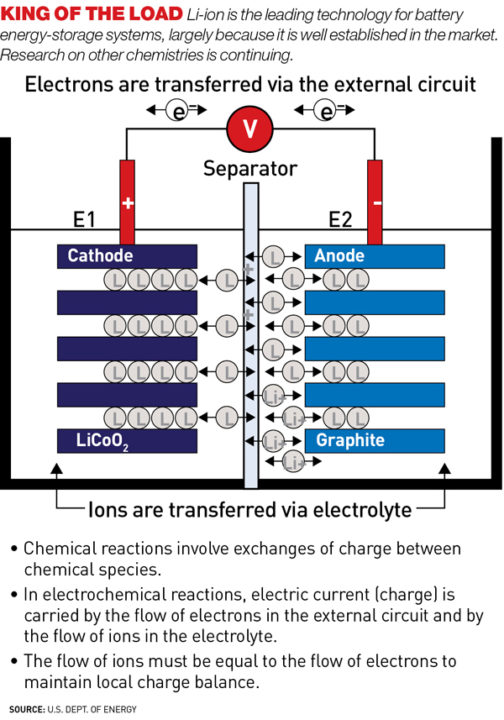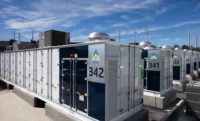A surge of energy is flowing into energy storage. Tesla Motors' Sept. 4 announcement that named Nevada the winner of a five-state competition to host its planned gigafactory added momentum to a market for which Lux Research LLC forecasts 8% compounded annual growth, to a global value of $50 billion, by 2020. Tesla's $4-billion plant outside Reno will produce batteries for the automotive market and the grid. According to market research firm IHS, the 2013 energy-storage installation of 340 MW will grow to 6,000 MW by 2017 and to more than 40,000 MW by 2022.
Tesla aims to produce 50,000 megawatt-hours of battery storage capacity annually by 2020. The company predicts the 10-million-sq-ft factory's production will shave 30% off the price of lithium-ion (Li-ion) battery storage per kilowatt-hour. Lux agrees that prices will drop but attributes the fall to a glut that will result from more than 50% overproduction. Prices now at $274/kWh will be $196/kWh when the smoke clears, Lux says. Tesla Motors declined to comment on the design and construction of the plant but is inviting bid inquiries.
Contrary to popular belief, "just in time" delivery originated not with Japanese manufacturers but with the electricity industry. Unlike other commodities, electricity is generated the moment it is demanded because it cannot be stored easily or cheaply. But that is changing now.
Pumped-hydro storage, first used in the 1890s, may have been the first utility-scale storage. These systems store energy as hydraulic head: Water is pumped to a high-elevation reservoir when rates for electricity are low, then discharged through hydroelectric turbines when rates are high, taking advantage of the arbitrage and other system benefits. Today, 95% of the 24,600 MW of energy-storage systems deployed in the U.S. are pumped-hydro plants, according to the U.S. Dept. of Energy.
 |
| KAMATH |
Compressed-air energy storage (CAES), flywheels, batteries and thermal storage make up the remaining 5% of deployed U.S. energy storage, which people intuitively connect with renewable energy, says Kamath. Electricity generation using wind and solar energy has achieved grid parity in some areas and is approaching it in many others. As these alternative energies enter the mainstream and customers increasingly rely upon them, their intermittency—their ability to generate power only when the sun shines or the wind blows—becomes the next technical hurdle.
Everyone can appreciate that energy storage connected with a solar plant or wind farm can help meet demand served by intermittent resources. Fewer know that it also provides ancillary services: frequency regulation, voltage support, black-start and other services that stabilize the grid and improve operation.
In July, a new plant in Hazle Township, Pa., reached full commercial operation and uses 200 flywheels to provide 20 MW of frequency regulation to PJM Interconnection, a regional transmission organization. The plant is the third owned and operated by Beacon Power LLC, Tyngsboro, Mass., which provides flywheel-based energy-storage solutions for large-scale grid-connected facilities and microgrids.
On the power grid, electricity supply must match demand to maintain frequency at 60 Hertz. The flywheel plant absorbs excess electricity from the grid and stores it as kinetic energy. When there is not enough power to meet demand, the flywheels inject energy back into the grid.
"Flywheels, CAES and various forms of thermal-energy storage can be used as reliable energy-storage resources," says Victor Babbitt, director of energy storage and business development for Renewable Energy Systems Americas Inc. (RES), Broomfield, Colo. "However, for various reasons, including cost, energy density, low efficiencies or technological maturity, these technologies are not at the forefront of today's grid energy-storage market."
But pumped storage is "geologically and geographically limited," says Haresh Kamath, program manager of energy storage and distributed generation at the Electric Power Research Institute (EPRI). "If you can [meet the requirements for water and elevation], then pumped hydro is one of the lowest cost and most effective energy-storage systems just in terms of the sheer amount of energy that you can store up."












